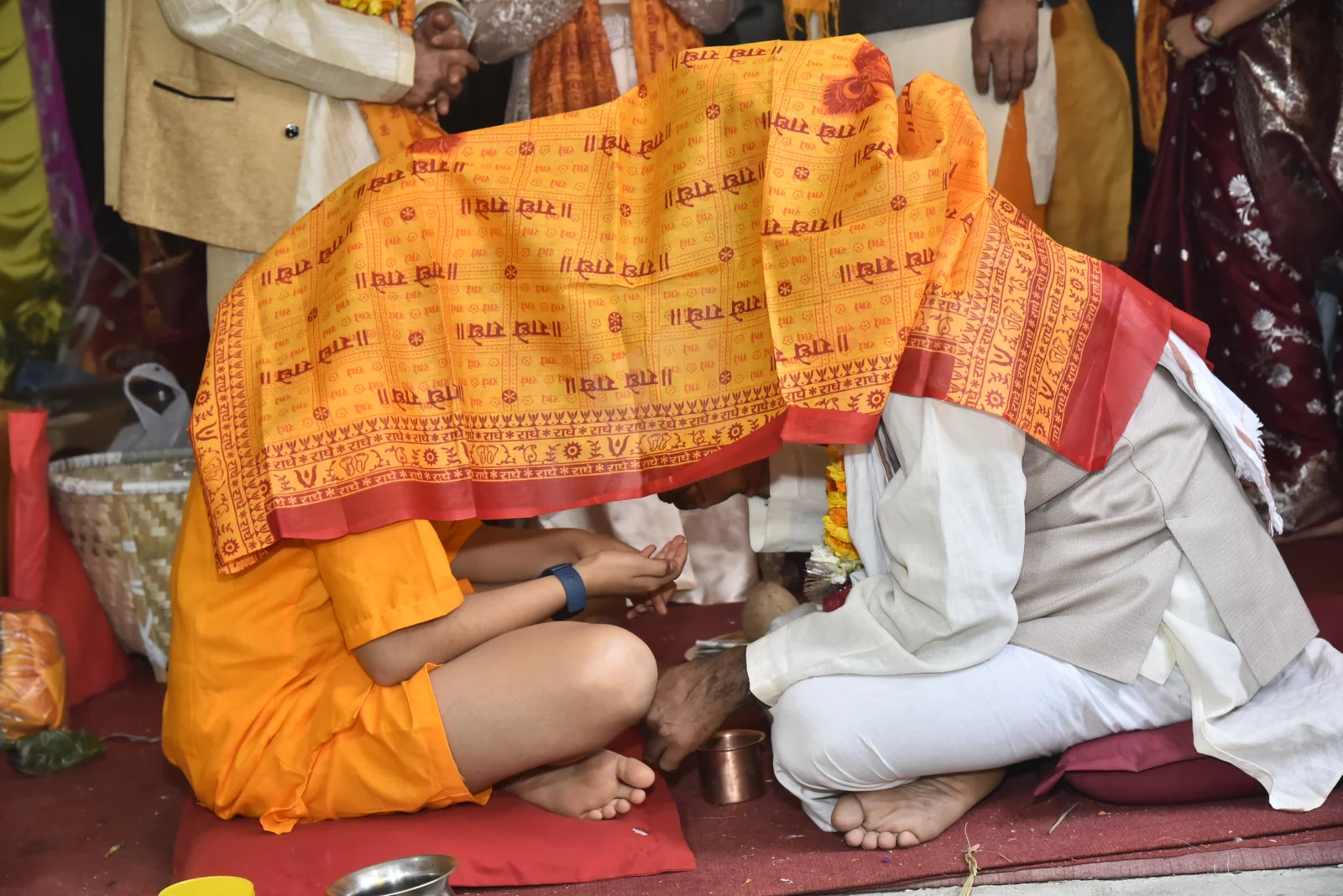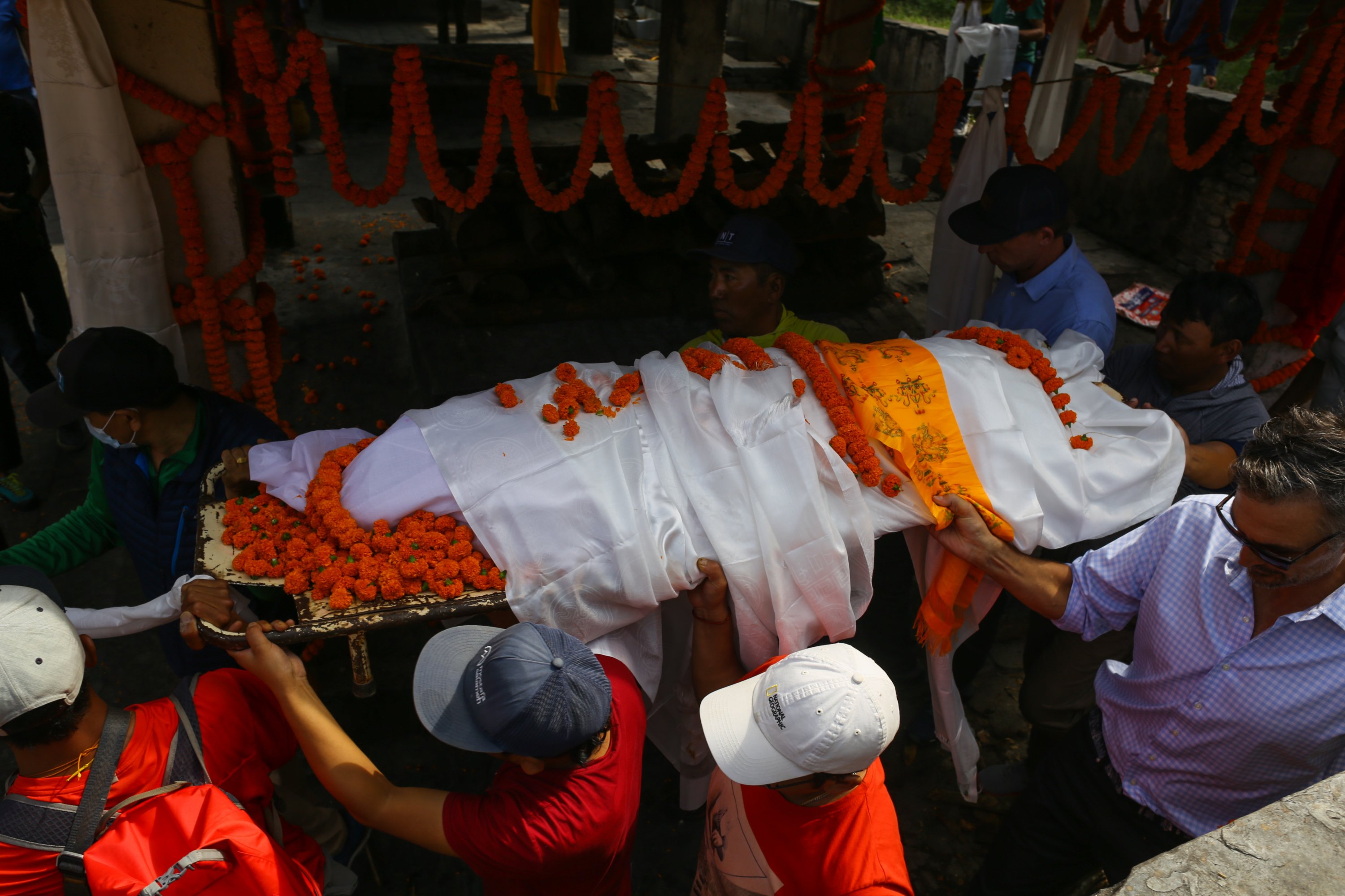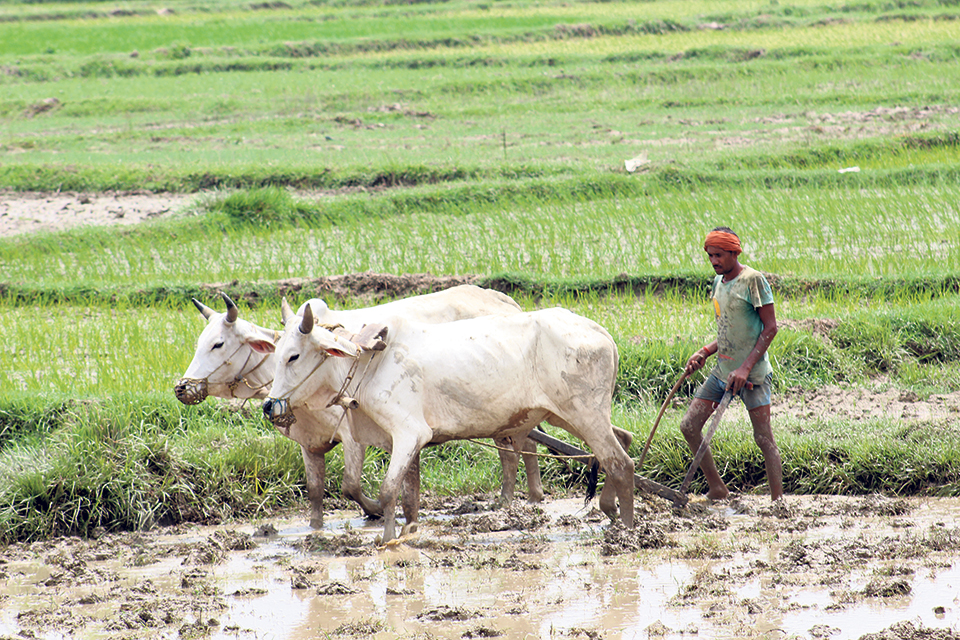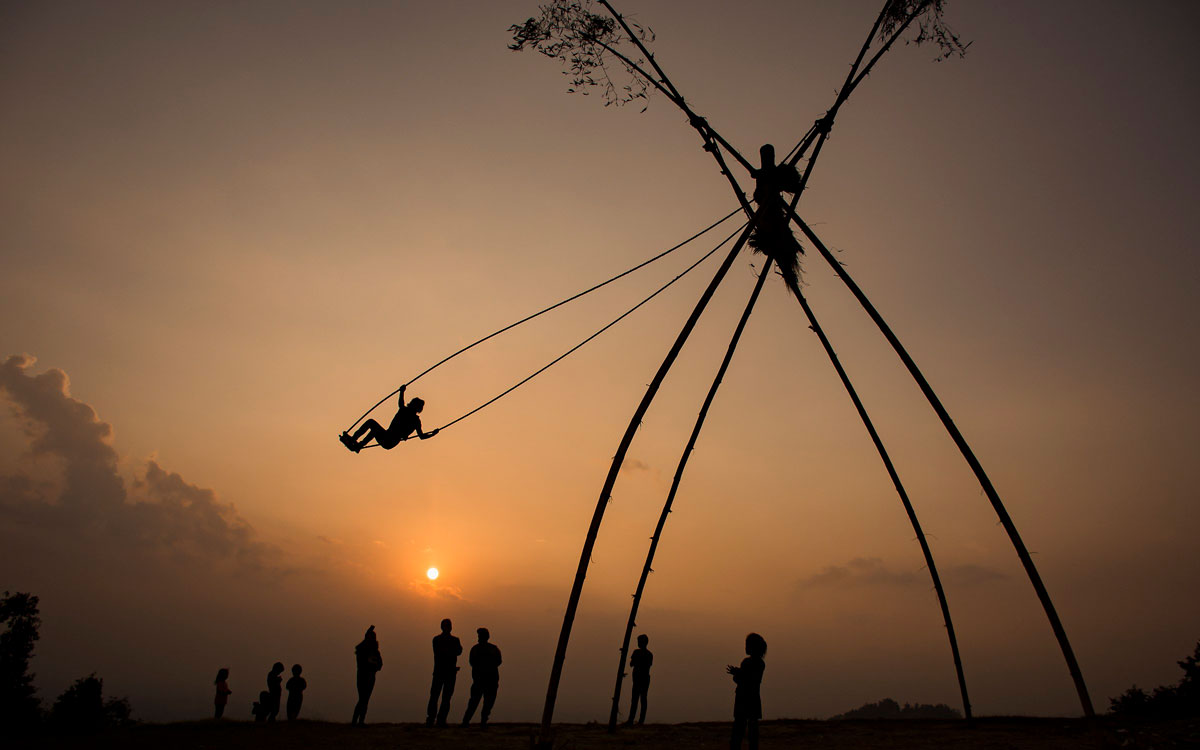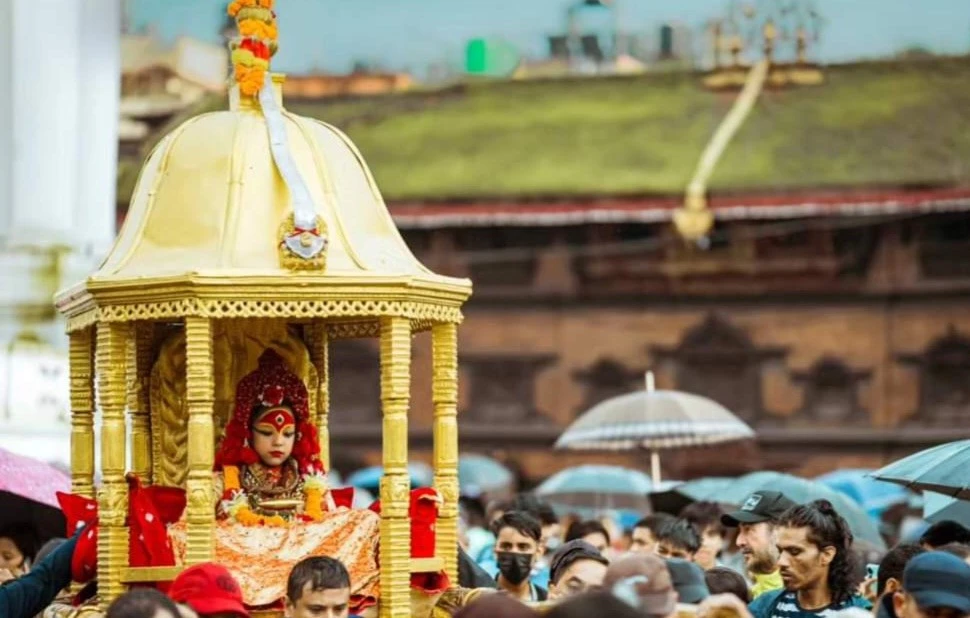Share this Article
Introduction: A Festival Beyond Time
Indra Jatra, one of the oldest and most vibrant festivals of Kathmandu, is more than a mere celebration; it is the heartbeat of the city’s cultural identity. Rooted deeply in the Newar community, it bridges ancient mythology, spiritual devotion, and communal harmony. Observed with grandeur in Kathmandu Durbar Square and surrounding neighborhoods, this festival is dedicated to Lord Indra, the god of rain and king of heaven in Hindu mythology, and is celebrated with a perfect blend of ritual, dance, and pageantry. The festival, which generally falls in September, is not just a religious observance but a living testimony to the city’s rich historical and cultural fabric.
The festival is particularly significant in Kathmandu’s socio-cultural landscape because it embodies the collective memory of generations, transmitting traditions, art forms, and local customs from the past to the present. It exemplifies the symbiotic relationship between religion, culture, and society, demonstrating how a festival can shape and preserve cultural identity over centuries.
Historical Background: Tracing the Roots
The origins of Indra Jatra are intertwined with the legendary tales of Lord Indra and the Kathmandu Valley’s ancient inhabitants. According to mythology, the festival commemorates the victory of the people over natural calamities and celebrates the god Indra’s role in bringing rain and prosperity. Historically, Indra Jatra is believed to have been observed since the Licchavi period, and it was further enriched during the Malla era, when kings used it as an opportunity to display royal power and patronage for arts and religion.
Over time, the festival evolved into a communal celebration that included diverse cultural performances, chariot processions, and sacred rituals. The historical accounts also suggest that Indra Jatra played a role in the consolidation of the Newar society, serving as a platform where communities could participate collectively in spiritual and civic life. Each performance, from masked dances to chariot pulling, carries layers of historical and mythological symbolism that reveal the profound cultural sophistication of the Kathmandu Valley.
Rituals and Ceremonies: Expressions of Faith
Indra Jatra is marked by an elaborate sequence of rituals and ceremonies that span several days. One of the most important events is the erection of the ceremonial pole, known as Lingo, in Kathmandu Durbar Square. The Lingo symbolizes the cosmic axis and serves as a conduit between the earthly realm and divine forces. Around this sacred pole, devotees gather to offer prayers, and masked dances, called Lakhey dances, are performed to appease spirits and bring blessings to the community.
Another significant ritual is the procession of the Living Goddess, Kumari, whose appearance during Indra Jatra is considered an auspicious blessing for the city. Her chariot procession through the streets of Kathmandu attracts thousands of devotees and tourists, highlighting the festival’s unique combination of spirituality and public spectacle. The festival also involves the display of various deities, including Bhairab and Ganesh, each enshrined in chariots and carried through the city streets amidst music, chants, and dances. These rituals not only reinforce religious devotion but also foster a sense of communal unity, reflecting the integrative nature of Newar society.
The Chariot Procession and Community Participation
One of the most visually striking aspects of Indra Jatra is the grand chariot procession, which forms the heart of the festival. The chariots, meticulously crafted with traditional woodwork and decorated with colorful fabrics and sacred symbols, carry images of deities like Indra, Bungamati Bhairab, and other protective gods. These chariots are pulled through the streets of Kathmandu by large groups of devotees, accompanied by the rhythmic beats of traditional drums, horns, and cymbals. The communal act of pulling the chariot is both a spiritual offering and a display of solidarity, bringing together people from different neighborhoods, castes, and backgrounds.
Participation in the chariot procession is considered highly auspicious. Families and local guilds take pride in maintaining the chariots, decorating them, and ensuring that the rituals are performed flawlessly. This collective involvement emphasizes the festival’s role in strengthening community bonds. Moreover, the procession’s route through historic streets and squares allows participants and spectators to engage with the city’s architectural and cultural heritage, turning the streets into living museums of Kathmandu’s history.
Cultural Performances and Traditional Dances
Indra Jatra is also renowned for its array of traditional dances and performances, which serve both a religious and entertainment function. Among these, the Lakhey dance stands out as a captivating ritualistic performance. The Lakhey, a demon figure, symbolizes the protector of the city and wards off evil spirits. Dancers wearing elaborate masks and costumes perform vigorous movements that blend martial arts with storytelling, narrating tales from local mythology.
Other significant performances include the Kumari’s ceremonial appearances, where the Living Goddess blesses devotees and presides over the festivities, and the Devi and Bhairab dances, which depict divine battles and cosmic themes. These performances are not merely artistic displays; they function as oral histories, passing down stories, ethics, and values from one generation to another. The dances, music, and chants collectively create an immersive environment where participants experience spiritual devotion, cultural pride, and communal joy simultaneously.
Symbolism and Mythology in Indra Jatra
Indra Jatra is rich with symbolism that reflects the Kathmandu Valley’s spiritual and cultural ethos. The festival’s central deity, Lord Indra, represents not only rain and fertility but also the cyclical nature of life and the interconnection between humans and nature. The Lingo pole, raised at the beginning of the festival, serves as a symbolic axis connecting the heavens, the earth, and the underworld, reminding devotees of the cosmic order and their place within it.
Masks, dances, and chariots each carry layers of meaning. For example, the Lakhey demon represents both chaos and protection, highlighting the duality of forces that govern human existence. Similarly, the chariot processions symbolize the movement of divine energy through the city, blessing the inhabitants and ensuring prosperity. By engaging with these symbols, participants internalize cultural values, understand spiritual principles, and maintain a living connection with Kathmandu’s mythological heritage.
The Role of Food, Music, and Market Activities
Indra Jatra is not only a religious and cultural spectacle but also a vibrant social festival, where food, music, and market activities play essential roles. Streets and squares of Kathmandu come alive with temporary stalls selling traditional Newar delicacies such as Yomari, Kwati, Sukuti, and various sweets and snacks. These foods are not merely for sustenance; they carry symbolic meanings and are often prepared as offerings to the deities before being shared among devotees and visitors. Sharing food during the festival strengthens social bonds and reflects the community-oriented nature of the celebrations.
Music is another integral component of Indra Jatra. Traditional instruments such as Dhime drums, Taa cymbals, and Panche Baja ensembles accompany the dances and processions. The rhythmic beats guide the movements of dancers and chariot pullers, creating a mesmerizing synchronization of sound, motion, and ritual. Music also functions as a vehicle for storytelling, conveying mythological narratives and moral lessons embedded within the festival.
The festival also boosts local markets, as artisans, vendors, and small businesses set up temporary shops around Durbar Square and other gathering points. Traditional handicrafts, masks, ceremonial attire, and souvenirs are sold to both locals and tourists. This economic activity supports the livelihoods of many families and preserves traditional crafts, ensuring that the artistic skills of the Newar community remain alive across generations.
Indra Jatra’s Influence on Tourism and Economy
Indra Jatra has evolved into a festival of global interest, attracting tourists, scholars, and photographers from all over the world. Its unique combination of ritual, pageantry, and urban spectacle provides visitors with a firsthand experience of Kathmandu’s living cultural heritage. Tourism during the festival significantly boosts the local economy, as hotels, restaurants, transport services, and guides experience high demand.
Beyond economics, the festival’s international recognition helps preserve Kathmandu’s cultural identity by generating awareness and appreciation of Newar traditions. Cultural performances, processions, and rituals are documented and shared globally, reinforcing the value of intangible heritage. Moreover, tourism during Indra Jatra encourages the younger generation to participate actively in the festival, fostering intergenerational continuity and pride in local culture.
Modern Challenges and Adaptations
While Indra Jatra has thrived for centuries, the festival faces modern challenges. Urbanization, commercialization, and the influence of global culture sometimes dilute traditional practices. Safety concerns during crowded processions, the degradation of historic sites, and environmental issues such as pollution also pose significant challenges.
However, the festival has demonstrated remarkable resilience. Community organizations, local authorities, and cultural preservationists work together to adapt rituals without compromising authenticity. Modern technologies, such as social media and online streaming, have expanded the festival’s reach, allowing global audiences to witness the celebrations while providing educational resources for younger generations. Despite these challenges, Indra Jatra continues to retain its spiritual essence and cultural significance, demonstrating the dynamic nature of living traditions.
Indra Jatra as a Reflection of Kathmandu’s Cultural Identity
Indra Jatra is more than a religious festival; it is a mirror reflecting the cultural identity of Kathmandu. The festival encapsulates the city’s historical depth, artistic heritage, and social cohesion. From the intricate wood carvings on chariots and temples to the precision of traditional dances, each element represents centuries of artistic innovation and devotion. The festival showcases how Kathmandu’s urban landscape and its people are intertwined through ritual, myth, and celebration.
The festival also highlights the pluralistic nature of Kathmandu society. Although primarily a Newar festival, it involves people from different ethnicities and communities, promoting inclusivity and mutual respect. By participating in shared rituals, music, and processions, residents of Kathmandu reaffirm their collective identity while respecting individual traditions. Indra Jatra therefore serves as a living embodiment of the city’s multicultural fabric, demonstrating how history, religion, and community converge in vibrant, dynamic ways.
Intergenerational Transmission of Traditions
A critical aspect of Indra Jatra is its role in transmitting cultural knowledge across generations. Elders, priests, and artisans teach younger participants the rituals, music, dances, and craftsmanship associated with the festival. Children accompany their families in processions, observe sacred ceremonies, and learn traditional chants and rhythms. Through this immersive experience, cultural knowledge is preserved in practice rather than just in written form.
Moreover, apprenticeships in traditional crafts, such as mask-making, chariot construction, and ceremonial costume design, ensure that the festival remains authentic while adapting to contemporary needs. By actively engaging the younger generation, Indra Jatra not only preserves Newar traditions but also cultivates a sense of pride and identity among Kathmandu’s youth. This process of intergenerational transmission demonstrates that cultural continuity relies on lived experience, active participation, and shared responsibility.
Concluding Thoughts on Its Cultural Significance
Indra Jatra stands as a testament to Kathmandu’s resilience, creativity, and communal spirit. It is a festival that transcends time, maintaining its sacred and cultural essence while adapting to the modern urban context. Through its rituals, dances, music, processions, and communal participation, Indra Jatra fosters a profound connection between people, history, and the divine.
The festival exemplifies how living traditions contribute to a city’s cultural identity. It preserves historical memory, reinforces social cohesion, nurtures artistic expression, and sustains spiritual devotion. By celebrating Indra Jatra, Kathmanduans honor not only the gods and goddesses of their mythology but also the enduring legacy of their ancestors. As a living tradition, it continues to evolve, inspire, and unite the community, ensuring that Kathmandu’s cultural heartbeat remains vibrant for generations to come.
Day-by-Day Celebrations: A Chronological Overview
Indra Jatra unfolds over eight days in Kathmandu, with each day carrying unique rituals, processions, and cultural performances. Understanding the chronological flow of events provides deeper insight into the festival’s complexity and spiritual significance.
Day 1: Raising the Lingo
The festival begins with the erection of the ceremonial pole, known as the Lingo, in Kathmandu Durbar Square. The pole, often carved from a tall tree and decorated with colorful flags and sacred symbols, represents the cosmic axis connecting heaven, earth, and the underworld. Community members gather to assist in raising the pole, accompanied by drumming, chanting, and ceremonial offerings. This ritual signifies the opening of the spiritual channel for divine blessings and marks the official commencement of Indra Jatra.
Day 2: Honoring the Deities
On the second day, devotees perform rituals to honor Lord Indra and other protective deities. Sacred offerings of food, flowers, and incense are made, and priests recite mantras to invoke divine blessings. This day emphasizes purification, devotion, and spiritual reflection, setting a solemn tone before the more public festivities begin.
Day 3: Lakhey Dance and Masked Performances
The third day is dedicated to Lakhey dances, one of the festival’s most iconic traditions. Dancers wearing elaborately carved demon masks parade through the streets, performing vigorous movements to symbolize the protection of the city from evil spirits. The Lakhey, despite its fearsome appearance, is considered a benevolent force, ensuring safety and prosperity for the community.
Day 4-5: Chariot Processions
The fourth and fifth days witness the majestic chariot processions, when deities are paraded through the city in ornately decorated chariots. The Kumari, or Living Goddess, makes ceremonial appearances, blessing the citizens and drawing thousands of spectators. The streets become a theater of devotion, music, and collective energy as participants pull the chariots, accompanied by traditional drum ensembles and chants.
Day 6: Street Celebrations and Community Gatherings
During the sixth day, local neighborhoods host smaller-scale celebrations that include communal feasts, music performances, and social gatherings. Residents engage in playful rituals, exchange food, and reinforce neighborhood solidarity. This day underscores the social and communal aspects of the festival, highlighting how Indra Jatra fosters cohesion at both city-wide and neighborhood levels.
Day 7-8: Culmination and Farewell Rituals
The final days of Indra Jatra feature concluding rituals, including the lowering of the Lingo and farewell ceremonies for the deities. Performances of traditional dances and music reach their peak, celebrating the festival’s successful completion. The closing rituals are both solemn and joyous, symbolizing gratitude, renewal, and the cyclical nature of life.
Significance of Specific Dances and Rituals
Each dance and ritual in Indra Jatra carries deep symbolic meaning. For instance, the Lakhey dance represents the balance between chaos and order, teaching devotees that protection and strength often come from confronting fearsome forces. The Kumari procession embodies purity, divine grace, and the inseparable connection between human and spiritual realms. Other dances, such as Bhairab and Ganesh performances, illustrate mythological narratives of divine battles, cosmic order, and moral lessons, emphasizing the didactic role of the festival in educating the community about spiritual values.
The mask-making tradition is another important aspect. Masks are meticulously carved by skilled artisans, with each color, expression, and design element symbolizing a particular deity or mythical entity. These masks are not mere decorations but are believed to carry the divine presence of the deities they represent, making their creation and performance a sacred act.
Myths and Stories Behind Indra Jatra
Indra Jatra is deeply rooted in mythology, and understanding these stories provides context to its rituals and celebrations. One of the primary legends involves Lord Indra, the king of heaven and god of rain, who plays a crucial role in sustaining life in the Kathmandu Valley. According to mythology, the valley once suffered from prolonged droughts, causing famine and distress. The people prayed to Indra, whose intervention brought rain and restored fertility to the land. Indra Jatra, therefore, commemorates the divine blessings of rain and prosperity and expresses gratitude for nature’s sustenance.
Another significant legend concerns the Lakhey demon, believed to have been a benevolent spirit who protected Kathmandu from evil forces. The Lakhey dances during the festival symbolize this protective power, reminding citizens of the importance of vigilance, courage, and spiritual strength.
The Kumari tradition also has mythological roots. The Living Goddess is believed to embody the energy of the goddess Taleju, whose presence protects the city and its people. The Kumari’s appearances during Indra Jatra are highly symbolic, signifying divine oversight, moral purity, and the harmonious balance between the spiritual and human realms. These stories, passed down through generations, provide moral guidance and preserve the spiritual essence of the festival.
Artistic and Architectural Heritage Connected to the Festival
Indra Jatra is inseparable from Kathmandu’s rich artistic and architectural heritage. The festival takes place in historic spaces such as Kathmandu Durbar Square, home to centuries-old temples, palaces, and shrines. These sites not only serve as venues for rituals but also as visual representations of the city’s cultural sophistication. The intricately carved wooden windows, doors, and temple struts that frame the chariot processions reflect the artistic excellence of the Malla period.
The festival also promotes traditional crafts, such as mask-making, chariot construction, and ceremonial costume design. Artisans meticulously craft wooden masks, each with specific symbolism and religious significance. Chariots are built using traditional carpentry techniques, adorned with vibrant fabrics, and decorated with sacred symbols. The preparation and display of these art forms during Indra Jatra highlight the festival’s role in sustaining Kathmandu’s artistic heritage and providing opportunities for community artisans to showcase their skills.
Moreover, musical heritage is preserved through the continuous performance of traditional instruments, such as Dhime drums, Taa cymbals, and Panche Baja ensembles. These instruments are not only essential to the festival’s rhythmic energy but also serve as vehicles for transmitting cultural knowledge and musical traditions across generations.
The Festival’s Role in Preserving Newar Cultural Identity
Indra Jatra serves as a living repository of Newar culture, maintaining religious, social, and artistic traditions in their authentic form. By engaging the community in collective rituals, performances, and processions, the festival reinforces a sense of identity and continuity. It preserves oral histories, mythological narratives, and ancestral knowledge through participatory practices, ensuring that cultural memory is transmitted naturally rather than formally documented.
The festival also fosters intergenerational bonding. Children learn dances, chants, and rituals from elders, while apprentices in craftsmanship acquire skills in mask-making and chariot construction. This immersive process ensures that Newar cultural identity remains vibrant and relevant despite modern challenges. Furthermore, the participation of people from diverse backgrounds strengthens communal harmony, showcasing the integrative and inclusive nature of the festival.
Contemporary Adaptations and Global Recognition of Indra Jatra
In today’s rapidly modernizing world, Indra Jatra has adapted in ways that preserve tradition while embracing contemporary needs. While the core rituals, dances, and processions remain intact, certain practices have evolved to accommodate urban development, safety concerns, and tourism. For example, the routes of chariot processions are carefully managed to prevent overcrowding, and temporary structures are built to support large gatherings of spectators.
The festival has also gained significant global recognition, drawing international tourists, scholars, and cultural enthusiasts. Media coverage, documentaries, and social media have amplified awareness, presenting Indra Jatra as a symbol of Kathmandu’s living heritage. Tourists experience the festival firsthand, participate in cultural activities, and purchase traditional crafts, which simultaneously boosts the local economy and fosters cultural appreciation. The global attention highlights the festival’s universal appeal, demonstrating that rituals rooted in specific local traditions can resonate worldwide due to their artistic, spiritual, and communal values.
Contemporary adaptations also include educational initiatives. Schools and cultural institutions organize visits and workshops during the festival to teach students about Newar traditions, rituals, and mythology. By integrating Indra Jatra into modern educational frameworks, the younger generation gains a deeper understanding of their cultural roots while learning to navigate contemporary society with a strong sense of identity.
Challenges and Preservation Efforts in the Modern Era
Despite its resilience, Indra Jatra faces modern challenges. Urbanization, environmental pollution, commercialization, and the pressures of mass tourism can dilute the festival’s authenticity. The preservation of historic sites, such as Kathmandu Durbar Square, has become increasingly critical, as chariot processions and large crowds exert stress on ancient structures.
In response, local authorities, cultural organizations, and community leaders have initiated preservation efforts. Restoration projects, safety regulations, and environmental measures help safeguard both the festival and the city’s heritage. Training programs for artisans, performers, and cultural guides ensure that skills and knowledge are transmitted accurately, maintaining ritualistic precision and artistic integrity.
Community involvement is central to these preservation efforts. Neighborhood committees organize events, maintain the chariots, and oversee the rituals, ensuring that the festival remains a collective endeavor rather than a purely commercial spectacle. Such initiatives highlight the delicate balance between tradition and modernization, demonstrating how living cultural practices can be protected while remaining vibrant and relevant.
The Philosophical and Spiritual Essence of Indra Jatra
Beyond its social, artistic, and economic dimensions, Indra Jatra embodies profound philosophical and spiritual meaning. The festival illustrates the interconnectedness of humans, nature, and the divine. Rituals like the erection of the Lingo, the chariot processions, and the Kumari’s blessings remind participants of the cosmic order and the cyclical nature of life.
Indra Jatra also emphasizes the themes of protection, renewal, and gratitude. The Lakhey dances signify the presence of protective forces, encouraging moral courage and vigilance. The chariot processions symbolize the movement of divine energy through the human realm, imparting spiritual blessings and fostering collective well-being. The festival’s culmination, marked by farewell rituals, teaches impermanence, gratitude, and the importance of living in harmony with the cycles of nature and society.
Through its rituals, performances, and communal participation, Indra Jatra transcends mere celebration, offering philosophical lessons on life, spirituality, and cultural continuity. It is both a mirror and a guide, reflecting Kathmandu’s identity while instructing its citizens on the values of devotion, harmony, and resilience.
Music, Costume, and Visual Art in Indra Jatra
Indra Jatra is a living tapestry of music, costume, and visual art, where each element contributes to the festival’s aesthetic and spiritual richness. The music performed during the festival is integral, setting rhythm and mood for rituals, dances, and processions. Traditional instruments like Dhime drums, Taa cymbals, Pung (long drums), and Panche Baja ensembles provide a layered auditory experience. These instruments guide the dancers’ movements, synchronize chariot pullers, and create an immersive environment where devotees feel spiritually connected to the deities. Each rhythm, beat, and chant carries centuries of cultural memory, serving both ceremonial and educational functions.
Costumes and masks are equally significant. The Lakhey dancers wear intricately crafted demon masks that are both fearsome and symbolic, representing protective spirits. Brightly colored fabrics, elaborate headdresses, and ceremonial jewelry adorn performers, creating a visual spectacle that reinforces the narrative of each ritual. The Kumari’s attire, made of traditional brocades and gold embellishments, symbolizes purity, divinity, and authority, emphasizing her role as a living goddess. Artisans who craft these costumes and masks rely on traditional techniques, ensuring that the festival remains a repository of Newar artistic heritage.
The visual art of Indra Jatra extends beyond costumes and masks. Chariots themselves are masterpieces, carved with intricate motifs of gods, mythical creatures, and sacred symbols. Temple decorations, ceremonial banners, and temporary festival installations contribute to a vibrant urban canvas. The visual aesthetics of the festival serve multiple purposes: they inspire devotion, narrate mythological stories, and foster a sense of communal pride. Through these arts, Indra Jatra functions as both a religious ceremony and a living exhibition of Kathmandu’s rich cultural traditions.
Personal Stories and Community Memories
Indra Jatra is not only a public spectacle but also a deeply personal experience for many Kathmandu residents. Families recount multi-generational memories of participating in chariot processions, performing dances, or assisting in festival preparations. Elders narrate tales of their first encounters with the Kumari, the excitement of pulling a deity’s chariot, and the communal feasts shared during the festival. These personal narratives create an oral archive of living culture, embedding the festival in the emotional and social fabric of the city.
Community memories often revolve around shared labor, collective celebration, and acts of devotion. Artisans recall the painstaking creation of masks and chariots, musicians reminisce about hours of practice for festival performances, and families pass down culinary traditions associated with the celebrations. These stories highlight the human dimension of Indra Jatra, revealing how the festival fosters belonging, identity, and intergenerational continuity.
Long-Term Cultural Impact and Legacy
Over centuries, Indra Jatra has shaped the cultural, social, and spiritual identity of Kathmandu. It has reinforced Newar traditions, preserved rituals, and ensured the continuity of performing arts. The festival has also influenced urban life by integrating historic squares, streets, and temples into public celebrations, turning the city into a living stage where heritage, spirituality, and community converge.
Indra Jatra’s legacy extends beyond Kathmandu, serving as a model for how festivals can preserve culture while adapting to modern challenges. By engaging communities, fostering education, and attracting global attention, the festival demonstrates the dynamic potential of living traditions. Its influence on music, dance, visual art, and community cohesion continues to inspire cultural preservation efforts across Nepal.
The festival’s enduring relevance lies in its ability to unite past and present, sacred and social, local and global. It remains a source of pride for Kathmanduans, a testament to resilience and creativity, and a vibrant embodiment of Nepal’s cultural identity.
Conclusion: Preserving a Living Legacy
Indra Jatra is far more than a festival; it is a vibrant manifestation of Kathmandu’s cultural soul. Through its intricate rituals, dynamic dances, elaborate chariot processions, and rich artistic expressions, the festival reflects the historical depth, spiritual devotion, and communal harmony of the city. It serves as a bridge between generations, allowing elders to pass down traditional knowledge while enabling younger participants to internalize and continue the practices that define Newar cultural identity.
The festival embodies the delicate balance between the sacred and the social, the past and the present, the local and the global. It preserves mythology, oral histories, and artistic craftsmanship, while simultaneously adapting to modern challenges such as urbanization, tourism, and environmental concerns. Indra Jatra’s continued vitality demonstrates the resilience of Kathmandu’s communities, their commitment to cultural preservation, and the ability of living traditions to evolve without losing their essence.
Moreover, the festival offers profound lessons in spirituality, social cohesion, and human creativity. The symbolism of the Lingo pole, the protective power of the Lakhey, and the divine presence of the Kumari collectively remind participants of the interconnectedness of life, the cyclical nature of existence, and the importance of communal responsibility. By engaging in these rituals, Kathmanduans reaffirm not only their devotion but also their identity, ensuring that the city’s cultural heartbeat remains strong.
In essence, Indra Jatra stands as a timeless testament to Kathmandu’s heritage—a living tradition that continues to inspire awe, foster unity, and celebrate the enduring beauty of Nepali culture. It is a festival that honors the past, enriches the present, and preserves a legacy that will resonate for generations to come.
Categories:
Culture & Traditions
Tags:
tradition
,
Jatraa


